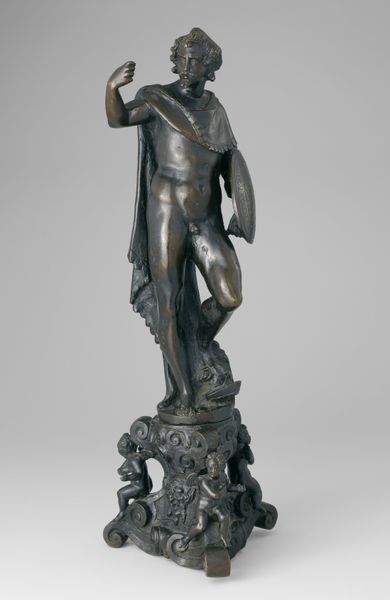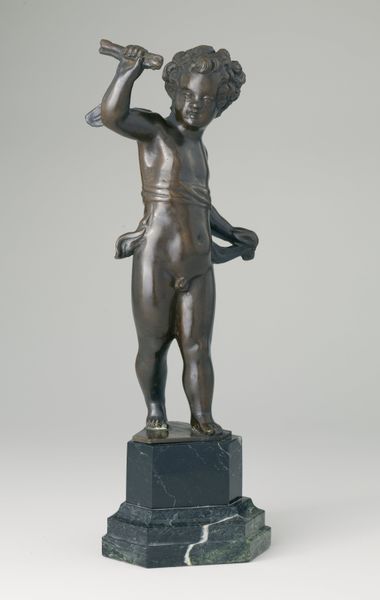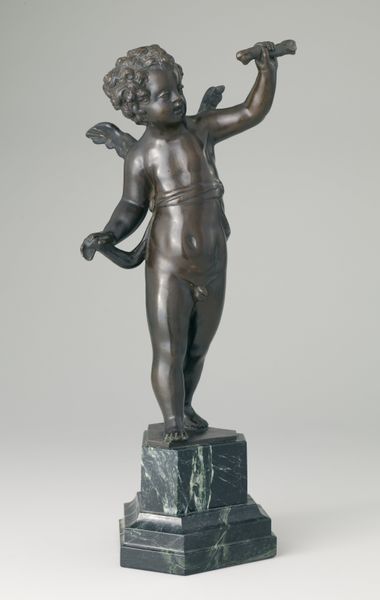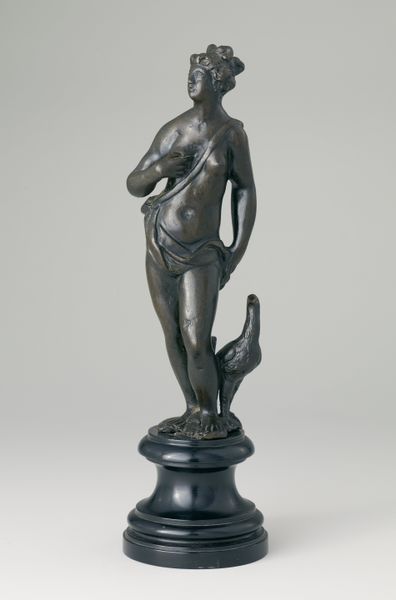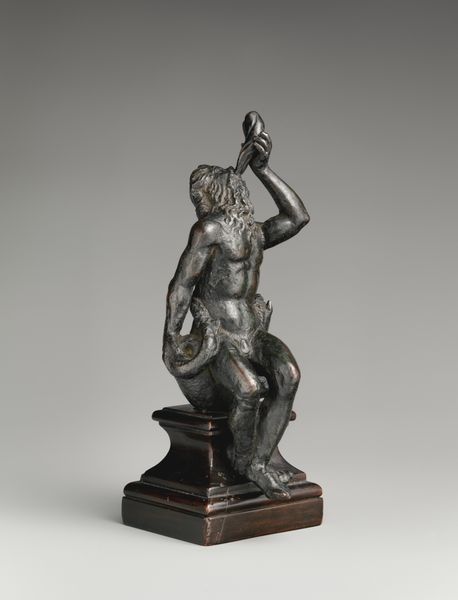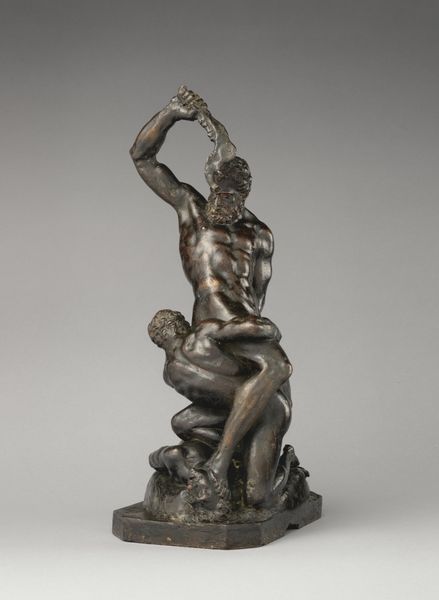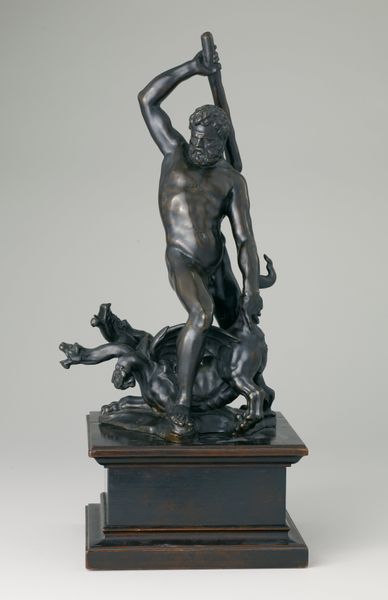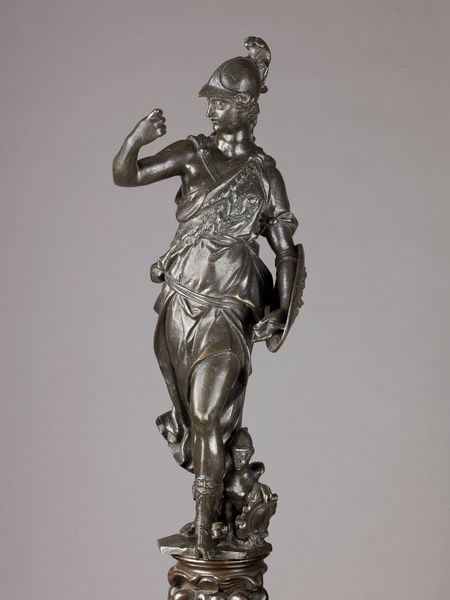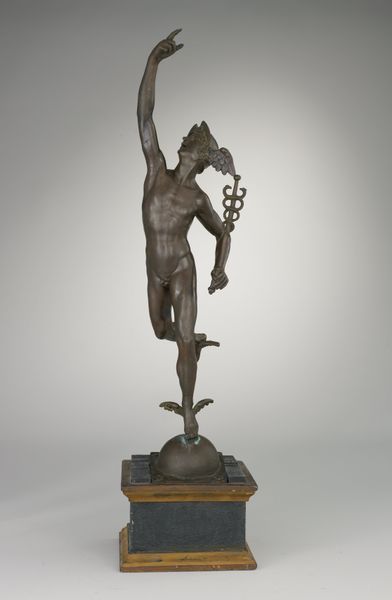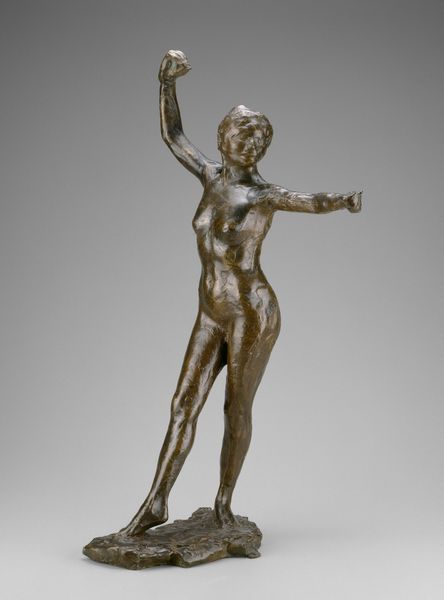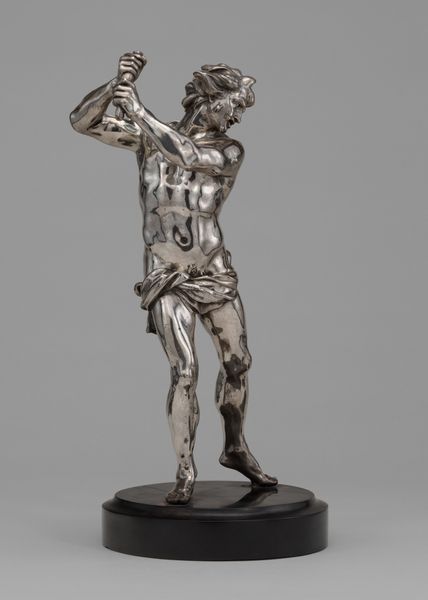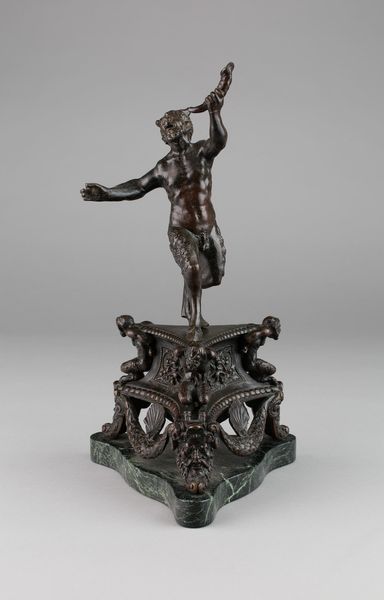
bronze, sculpture
#
sculpture
#
bronze
#
figuration
#
11_renaissance
#
sculpture
#
italian-renaissance
#
nude
#
italy
Dimensions: 21 1/2 x 7 1/4 x 6 in. (54.61 x 18.42 x 15.24 cm)
Copyright: Public Domain
Curator: This bronze sculpture, titled "Diana the Huntress," dates back to the 16th century and resides here at the Minneapolis Institute of Art. It depicts the Roman goddess of the hunt. Editor: The smooth, cool sheen of the bronze gives Diana a serene quality, despite her role as a powerful huntress. She seems almost caught in thought rather than in action. Curator: It's interesting to note the subtle politicization of mythological figures during the Renaissance. Diana, traditionally a symbol of chastity and the wild, would have served as a powerful model for aristocratic women, projecting both virtue and strength. The act of creating such figures in bronze would also align their subjects with notions of immortality and high status. Editor: I’m struck by the recurring symbol of the crescent moon we often see adorning Diana, in this instance it’s echoed by her graceful, pointed gesture. Consider how potent that is! It links her directly to lunar cycles, intuition, and the feminine divine, not just for viewers in the Renaissance but across millennia. And notice her canine companion at her feet, too, standing guard and echoing the sharpness of her senses. It suggests vigilance, loyalty and companionship. Curator: Absolutely, these works rarely exist outside of broader cultural considerations. Wealthy patrons of the time likely commissioned similar pieces to align themselves with the idealized virtues of the Roman pantheon, further legitimizing their social position and power. Bronze statues like this one functioned as both artistic and social statements. Editor: So much of art, whether consciously or not, builds upon and reinterprets familiar symbols to subtly shift how they're received and understood. Exploring how an image like Diana has shifted is a wonderful way to see cultural attitudes reflected over time. Curator: Indeed, understanding the original context transforms how we view such iconic works today, it makes them richer. Editor: I concur; this exercise only amplifies the statue's resonance across the ages.
Comments
No comments
Be the first to comment and join the conversation on the ultimate creative platform.
